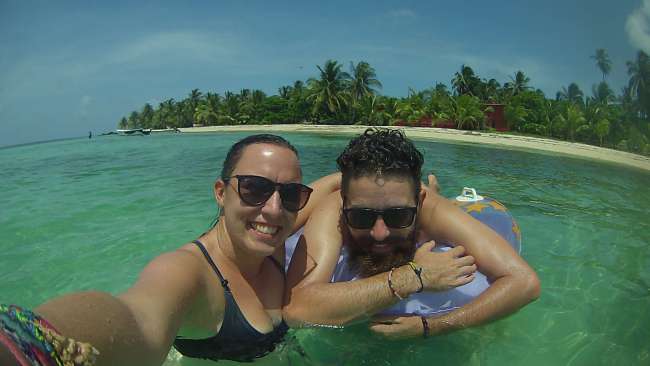
alpakaliebe
vakantio.de/alpakaliebe-tiniundtoemmiinsuedamerika
"This is probably the most beautiful bird shit I have ever seen in my life" - Cruise through the Galapagos Islands
வெளியிடப்பட்டது: 16.10.2016
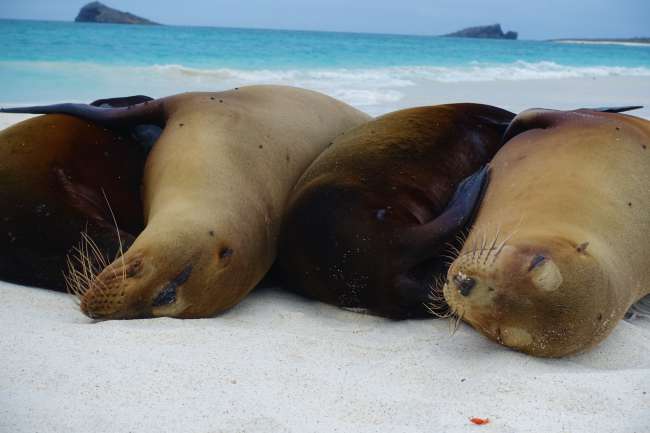
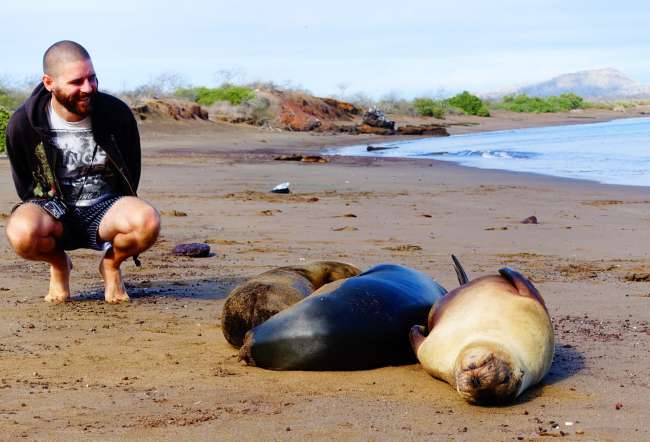
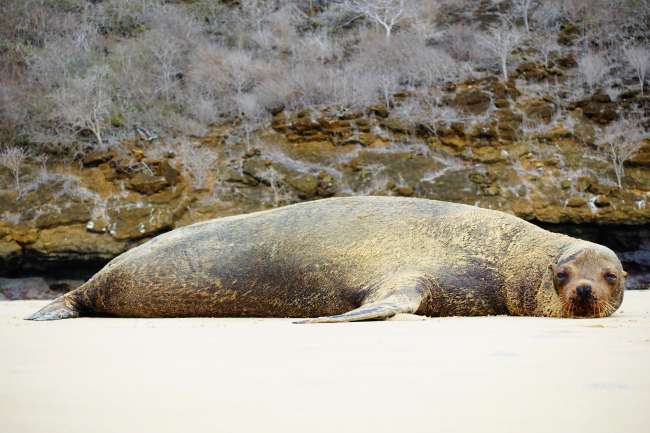
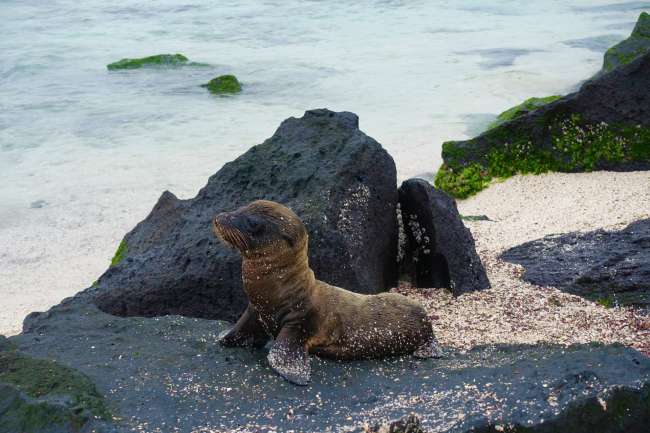
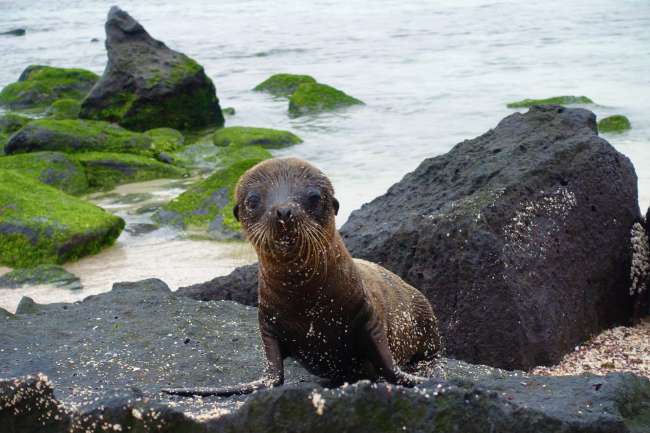
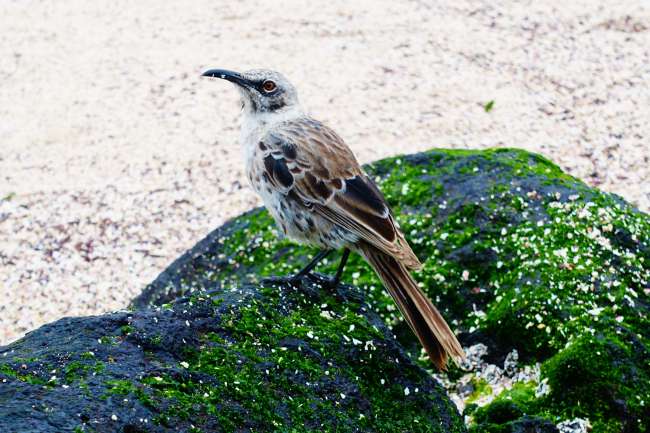
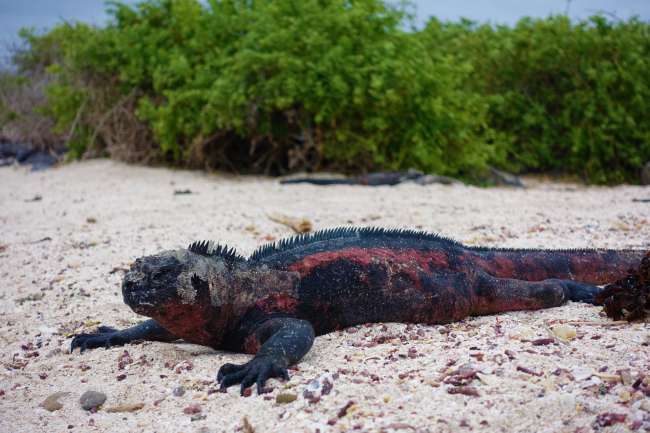
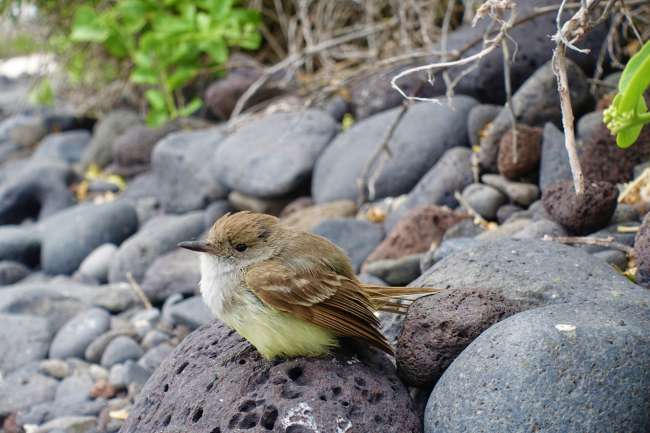
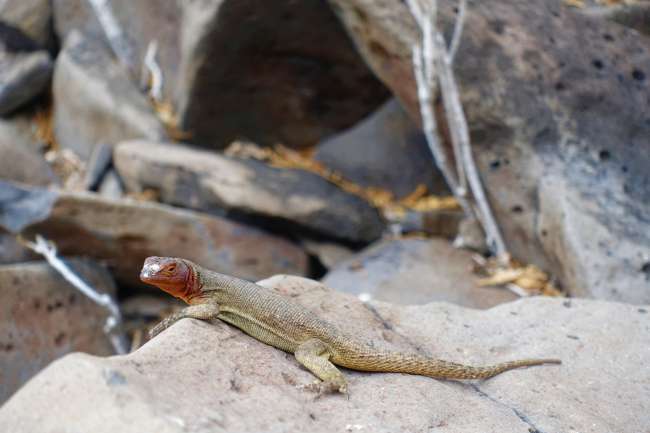
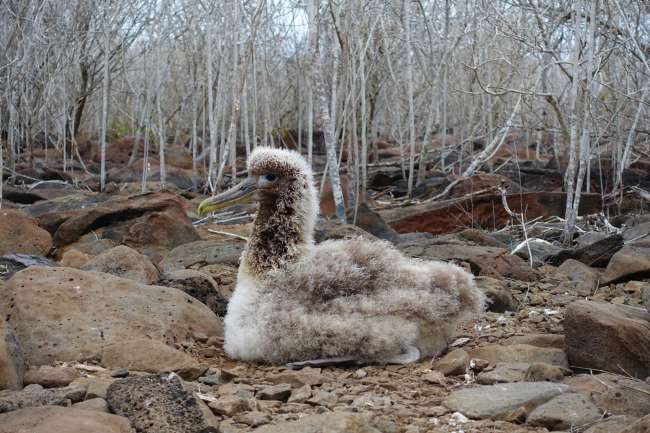
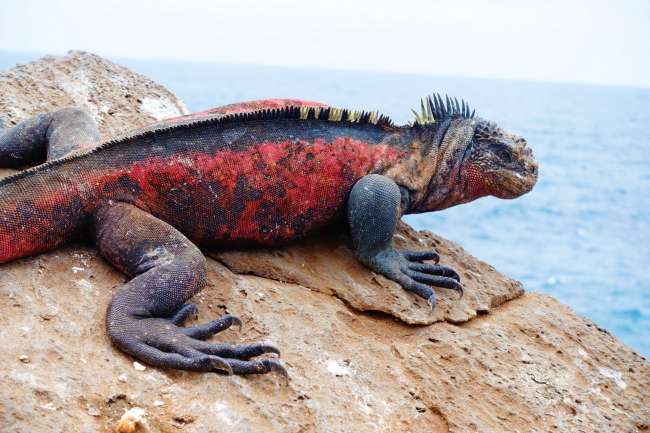
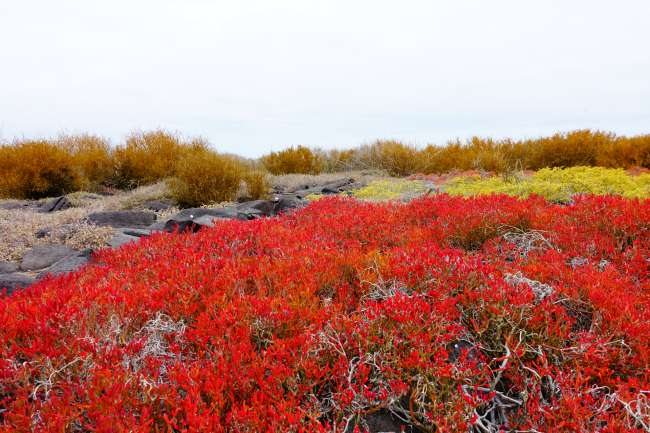

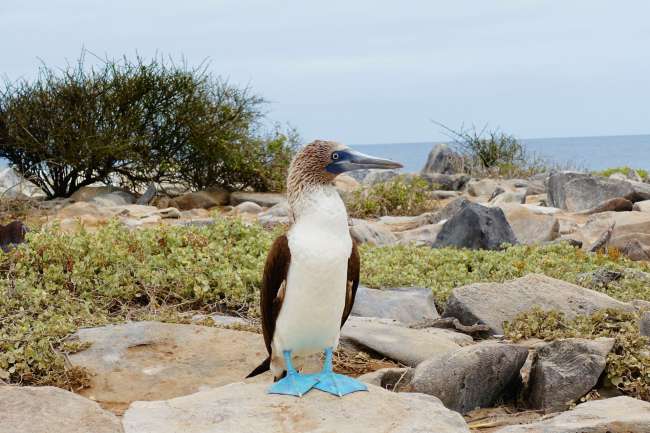
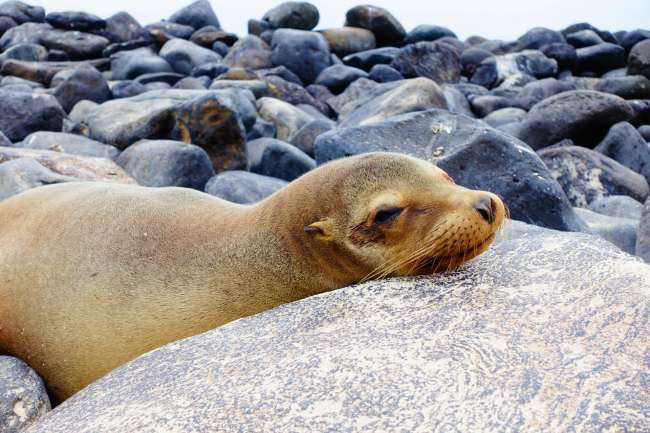
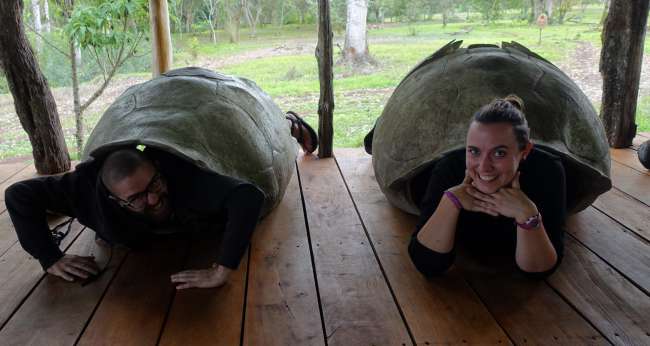
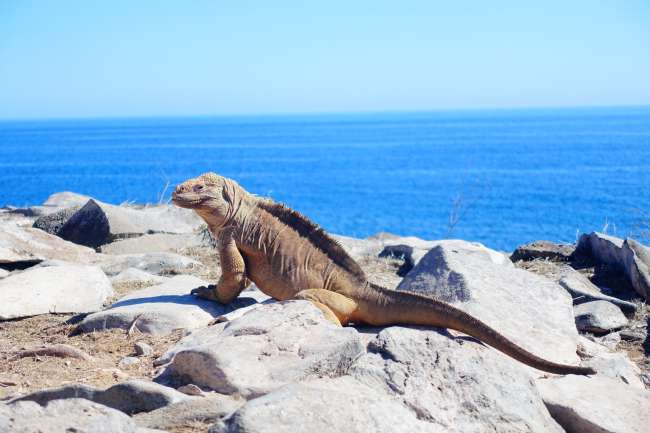
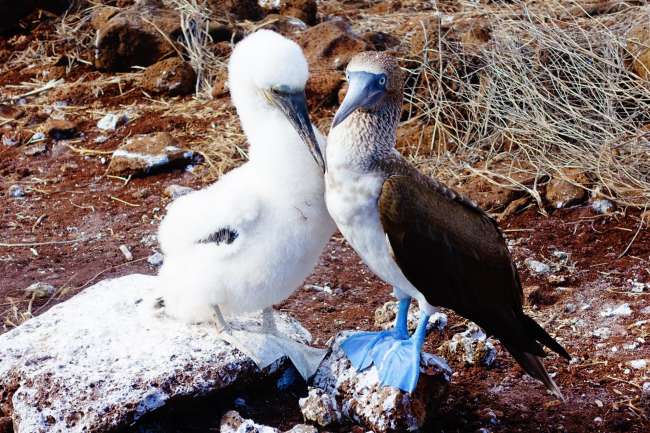
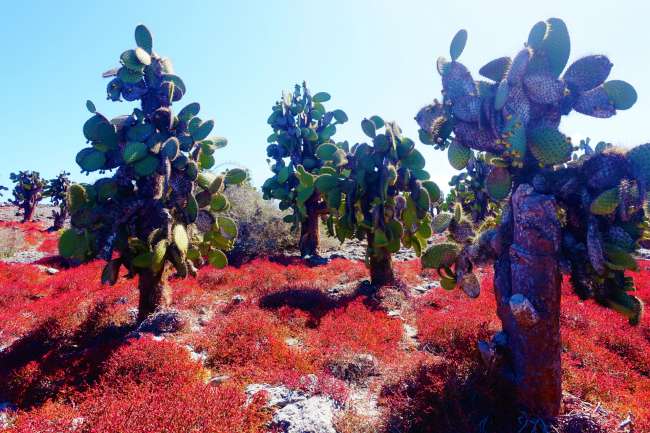
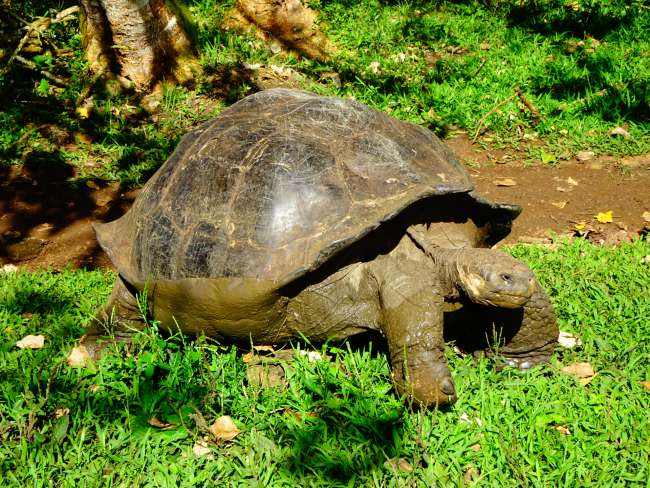
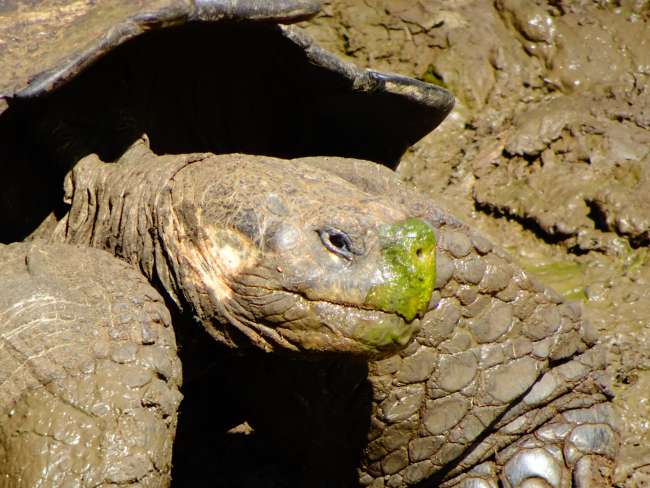
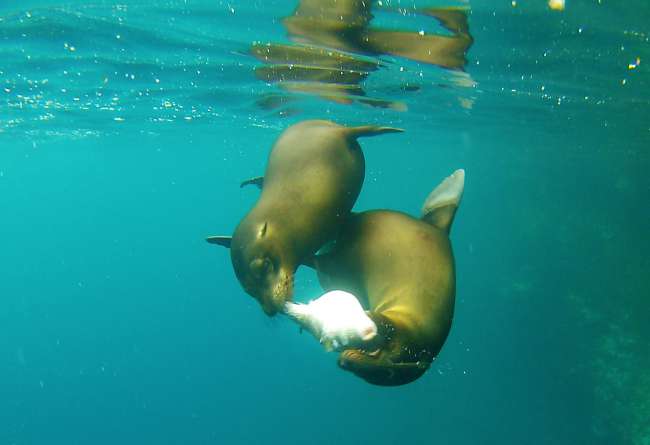
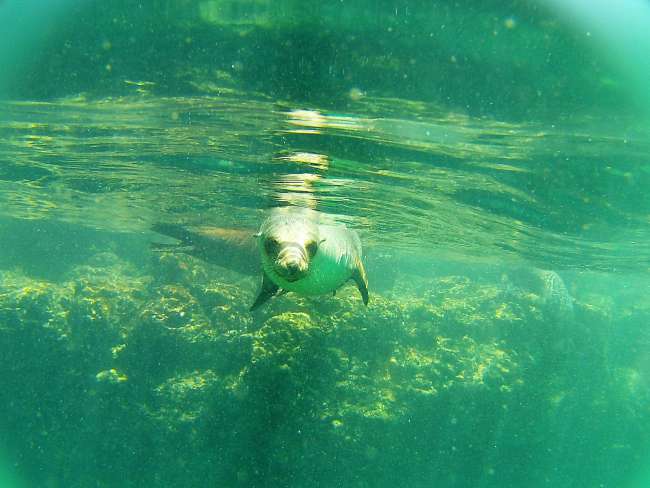
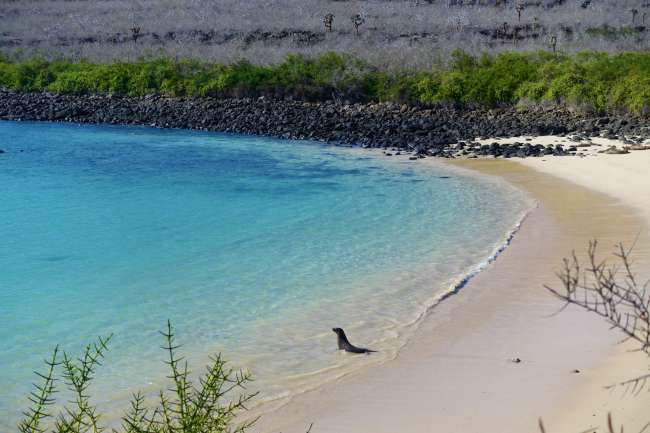
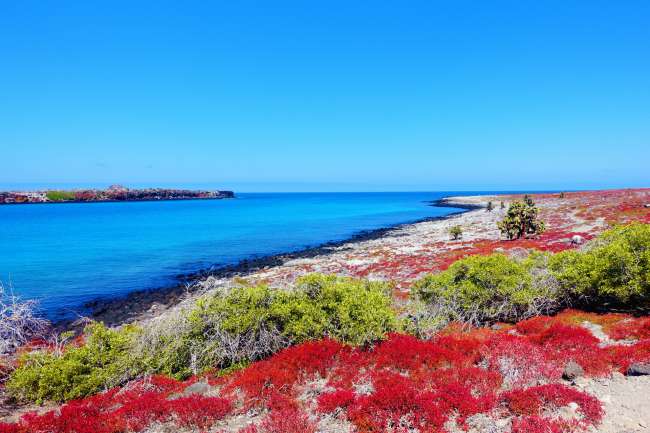
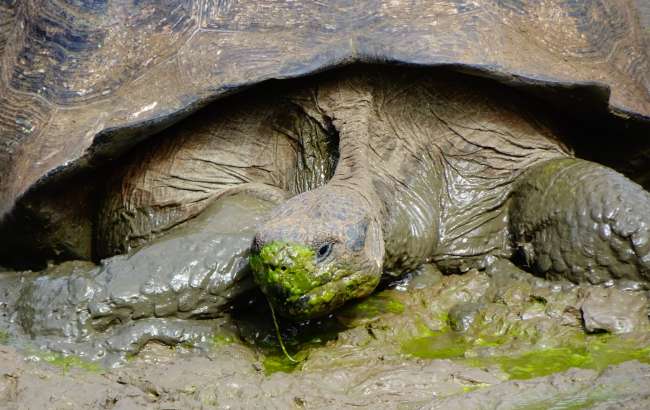
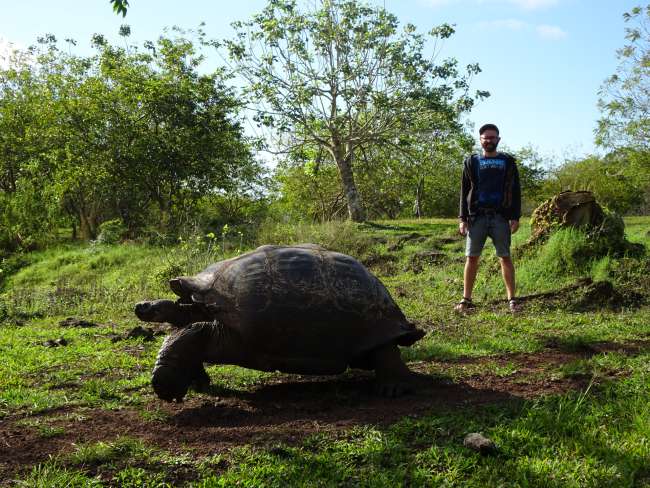
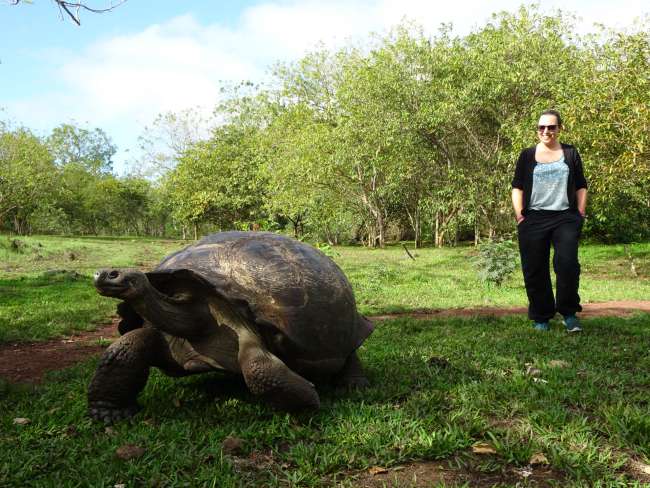
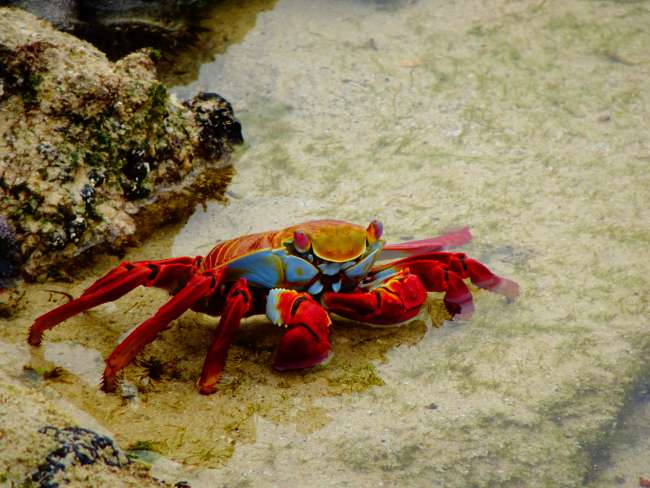
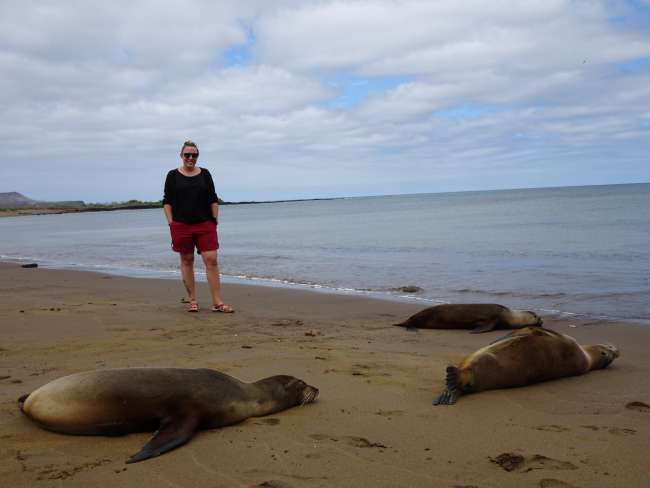
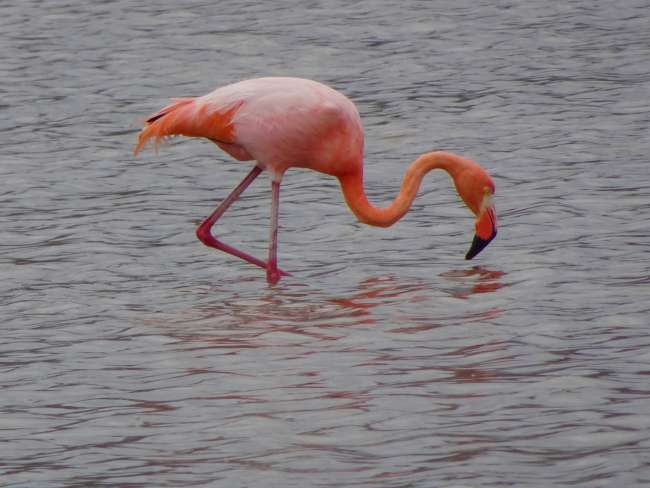
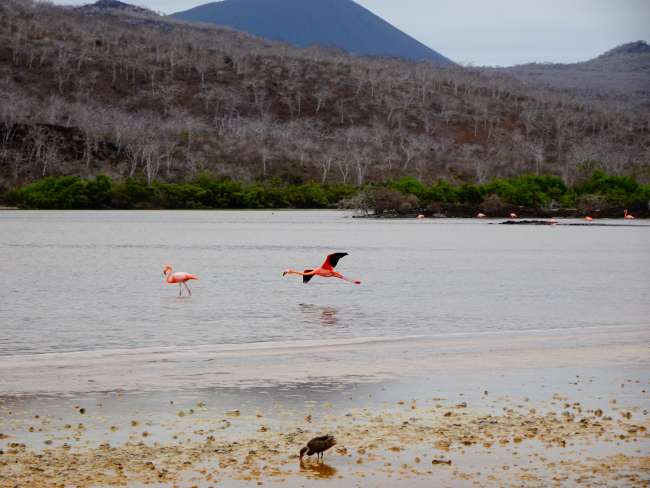
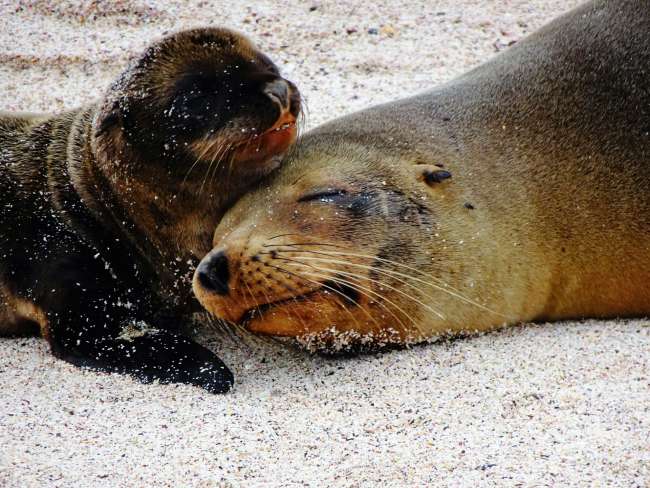
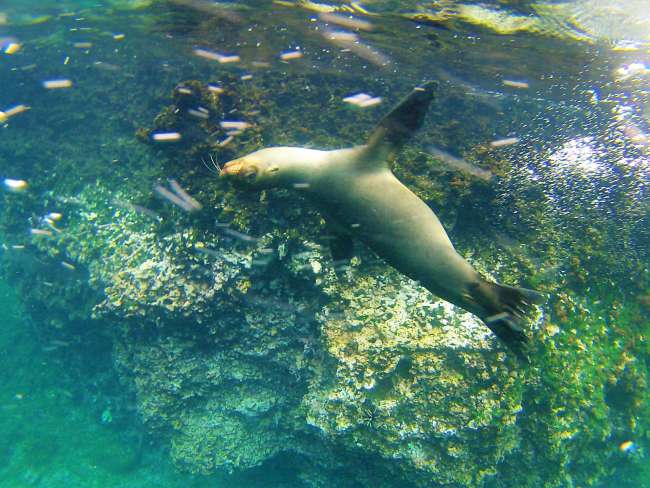
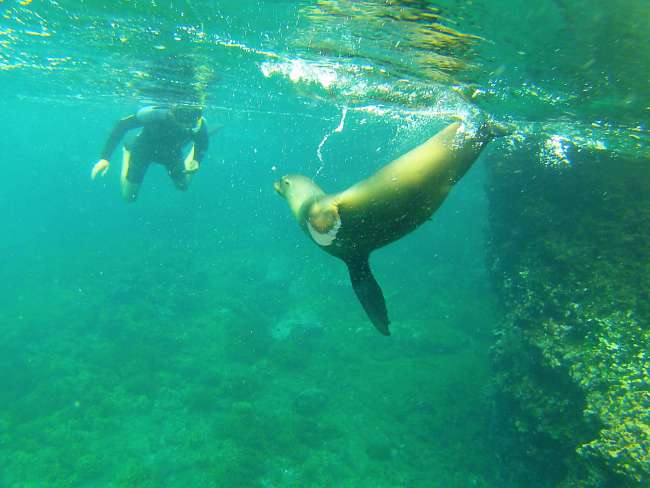
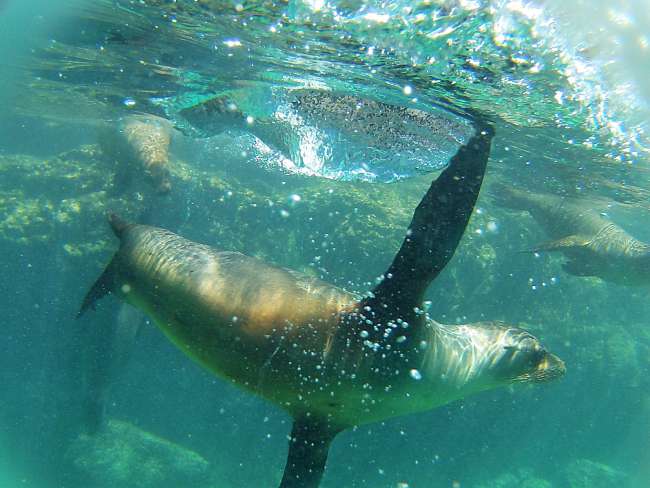
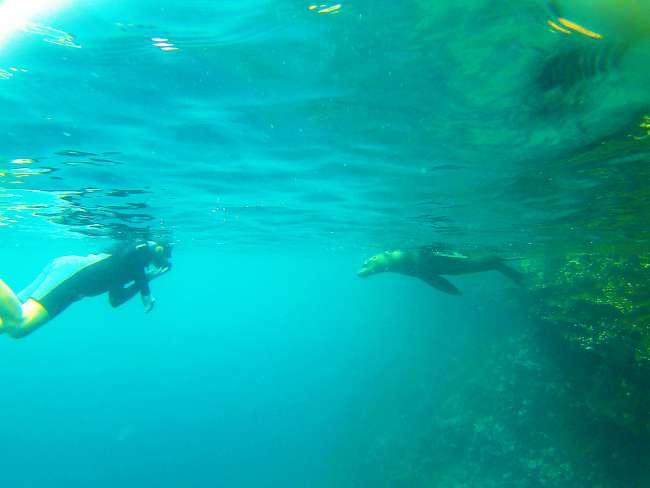

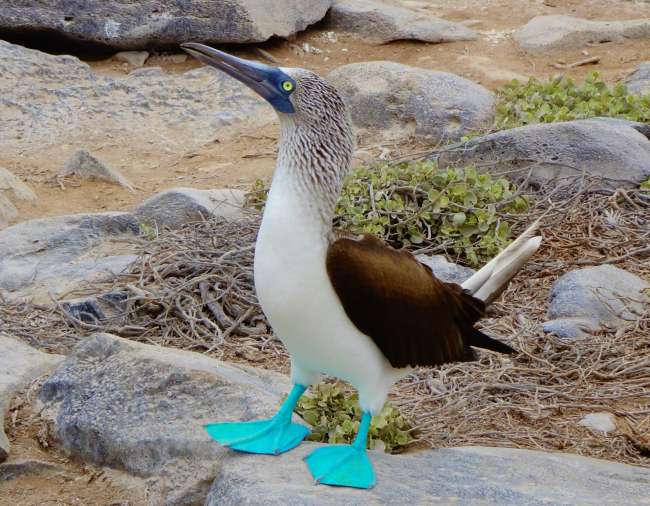
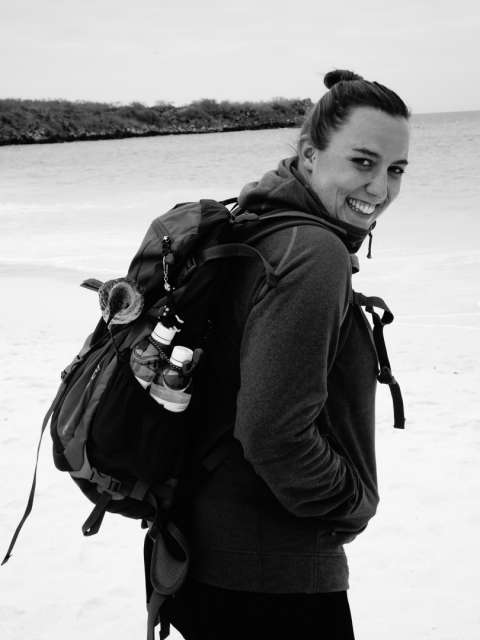
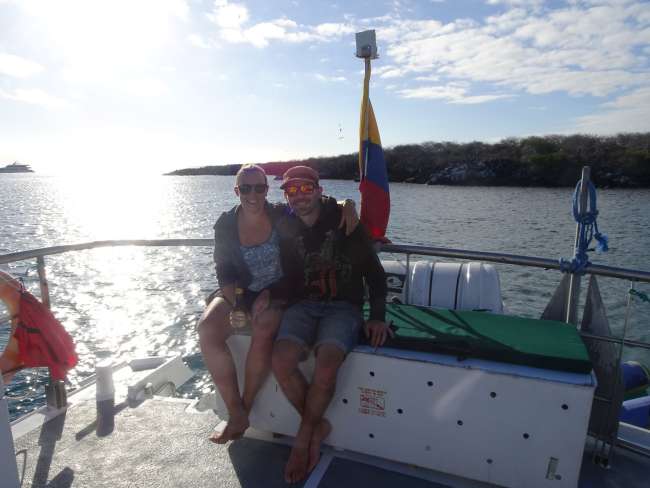
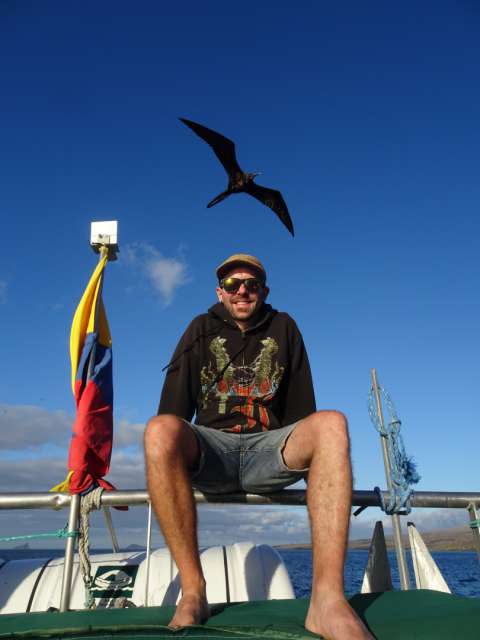
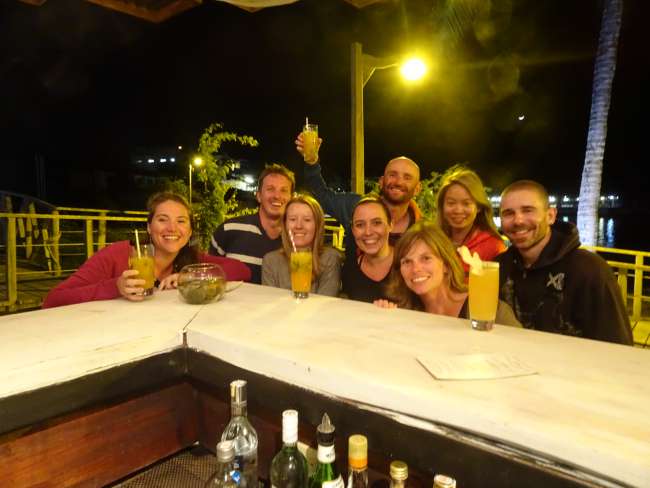
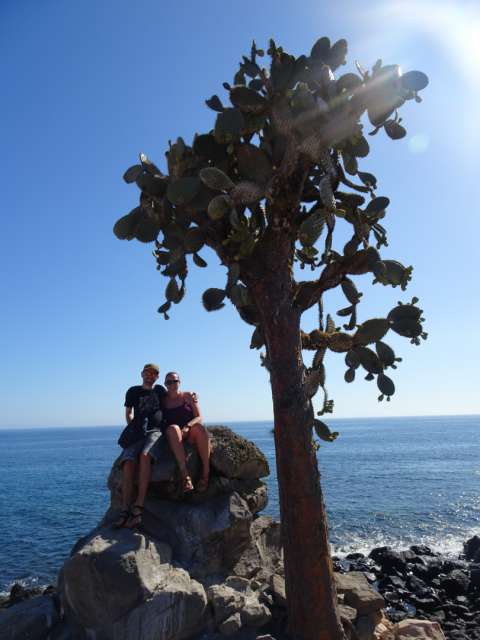
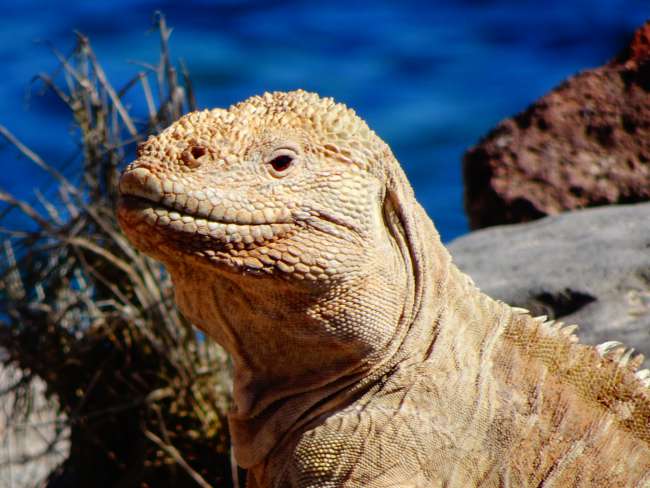
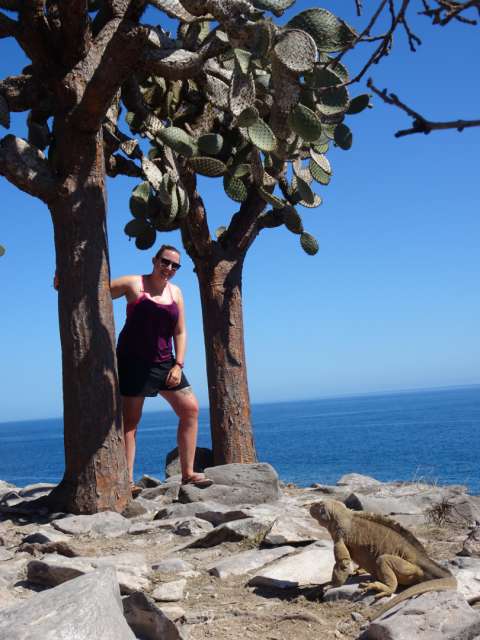
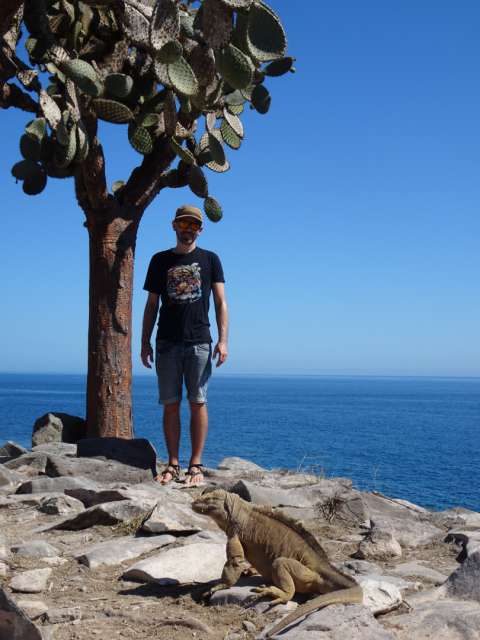
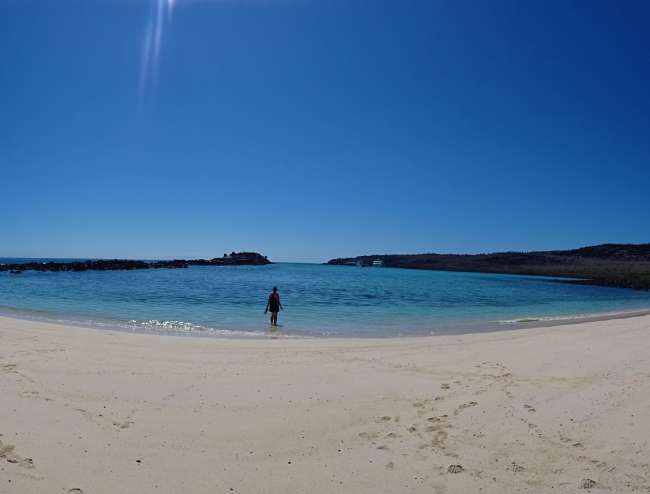
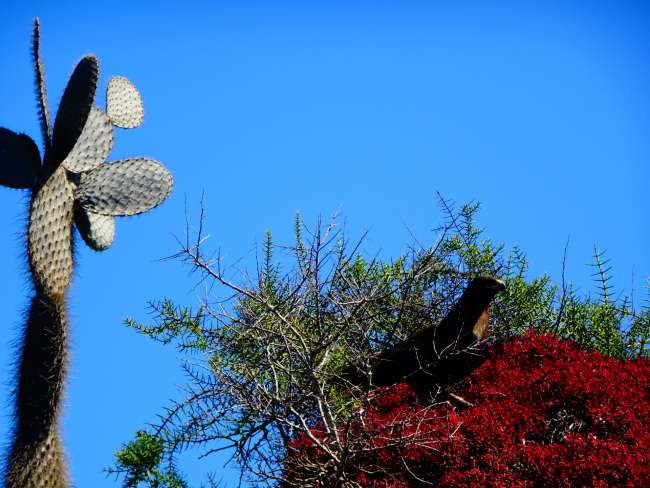
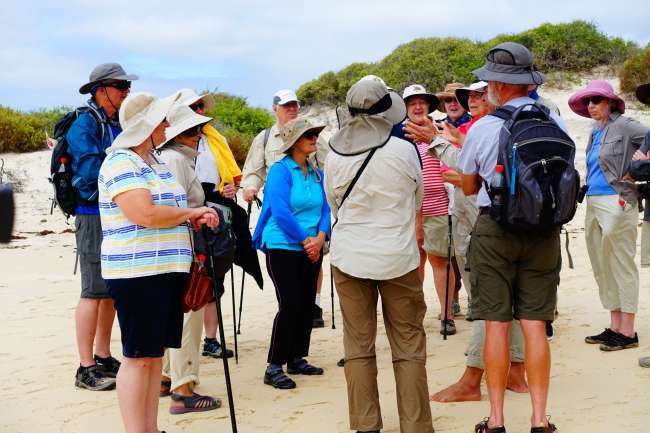
செய்திமடலுக்கு சந்தாதராகவும்
After having enough of the rainy Andean weather in Cuenca, we wanted to pamper ourselves with some sun on the coast and we hadn't given up hope of finding an affordable last-minute offer for a Galapagos cruise. So off to Guyaquil, the second largest city in Ecuador, after Quito.
Guyaquil greeted us with super warm temperatures, a park where iguanas crawl freely, a beautiful beach promenade, and truly breath-taking traffic and noise. Luckily, our hotel had a travel agency that only offers Galapagos cruises, and we had (after hours of back and forth, cancellations and then confirmations) finally got lucky: 6 days of an "affordable" cruise to the southern islands on the Floreana were waiting for us! We were super happy, but we still had to wait another week for it to finally start. Since we didn't want to stay in the stinky Guyaquil for another week under any circumstances, we decided to drive a bit north to Montañita, where there should be a great beach, high waves, and good cocktails.
Unfortunately, Montañita ruined our plans for sun and beach, we didn't see the sun on any day :-( That's why the anticipation for the Galapagos Islands was even greater!
On the evening before the flight to Baltra, we decided to have a burger for dinner in the hotel's own restaurant, an unfortunate choice: The burger meat was not fully cooked and so our long-awaited day started with a greeting from the toilet. Tömmi got it worse than me and he felt really bad throughout the entire flight, for me the rotten burger only made itself felt on Santa Cruz, but thanks to the giant turtles waddling around everywhere, I was so distracted that it wasn't so bad.
The entry requirements for the islands are quite something: Before departing, you have to pay $20 to even board a plane to the islands. Then the luggage is searched multiple times to prevent any edible or foreign objects from entering the islands (the Ecuadorian guy next to me somehow managed to smuggle over an XXL family bucket of chicken legs from KFC). On the plane, the entire carry-on luggage is sprayed with insecticide and on the island, you have to pay a $200 park fee, of which only $25 goes to the Galapagos islands. But as soon as you leave the airport, you are in paradise and you are greeted by pelicans, blue-footed boobies, and sea lions right at the ferry. On the way to the pier, you can see giant turtles that freely roam around every second.
When we arrived at the pier, we were a bit nervous about what to expect on Floreana, as we had already heard some horror stories about the "cheaper" ships. But our worries were completely unfounded: Floreana and the crew were great, we were completely satisfied, from the cabins to the food, we couldn't have asked for anything better. Our fellow sailors were all cool and we got along great. Our guide Victor was a bit special, but in his own way, a really nice guy. While his knowledge about the flora and fauna wasn't the deepest and some of our questions remained unanswered, there was a well-stocked library on board about the plant and animal world, so you could read up on your own.
At lunchtime, we immediately made acquaintances with my favorite animals until then: the Galapagos giant turtles! Of the once millions of animals living there, there are now only around 250,000 left, but the population is recovering very well since the islands are protected. For sailors, the turtles were a delicacy, easy to catch, easy to stack in the ship's hull, and easy to take care of (several months without grass and water), and one turtle could feed the whole crew. In addition, valuable lamp oil was obtained from them. That's why it's surprising how trusting all the animals on the islands are.
On the islands, it feels more like we are sitting in a zoo and the animals are watching and admiring us. Without exception, all the animals don't care in the slightest when people walk past them (hardly anyone adheres to the prescribed 2-meter distance). Most animals are even so friendly that they come right up to you, sit on you, or see you as a playmate underwater. When a sea lion mama carries her baby into the water right in front of our eyes, albatross parents feed their chicks, blue-footed boobies present their beautiful waddles by dancing, or sea lion teenagers play soccer with a pufferfish, your heart opens with so much beauty and peacefulness. This is where statements like Tömmi's come from: 'This is probably the most beautiful bird shit I have ever seen in my life!' Even when a shark swam right under me, I didn't feel the slightest bit of fear because everything here is so peaceful and the animals don't see humans as a threat. The barren and rather uninhabitable island landscape also impressed me: the islands are simply made for the animals, humans have no place here in the long run!
Note on pufferfish soccer: Since sea lions only have mischief in mind (my new favorite animals #1) and they have to somehow get rid of the energy they collect during their up to 15-hour naps on the beach, they invented pufferfish soccer and this is how it works: A pufferfish is caught but not eaten, instead, it is inflated through mouth-to-mouth resuscitation to make it look almost like a pufferfish and perfect for playing soccer! Underwater, things get wild until the fish and the sea lions run out of breath.
According to Victor's motto "More time on the islands, less time on the boat", we always sailed from island to island at night, about 8 hours every night, and were greeted in the morning with a new island panorama for breakfast. We visited all the islands on our southern route both on foot and underwater, and each island was special and beautiful in its own way.
Onboard, the atmosphere was always characterized by pure gratitude, sometimes we couldn't believe what we were able to experience. On San Cristóbal, we wanted to celebrate our luck, but at the end of the great evening, we were surprised by a $180 cocktail bill ;-) treat yourself!
Unfortunately, the 6 days went by quite quickly and we were very sad when we were back in the stinky Guyaquil. Since Tömmi lost or sank his second e-cigarette (the first one was stolen from him on the bus in Latacunga), we had to go back to Cuenca, where we had spotted a steam shop during our first visit. He found what he was looking for there and we were also able to find a good bus connection from Cuenca to Peru. At the bus terminal, we randomly met Penny and Adam, who had also joined us on the Floreana, and we drove together to Máncora on the Peruvian coast! The border crossing went smoothly and Máncora spoiled us with sun, beach, and delicious ceviche (raw fish fermented in lime).
But now it's time to continue to the Andes to Chachapoyas, where there are even older excavations to admire than at Machu Pichu: we are excited and hope that the 16-hour bus ride will be bearable.
செய்திமடலுக்கு சந்தாதராகவும்
பதில்
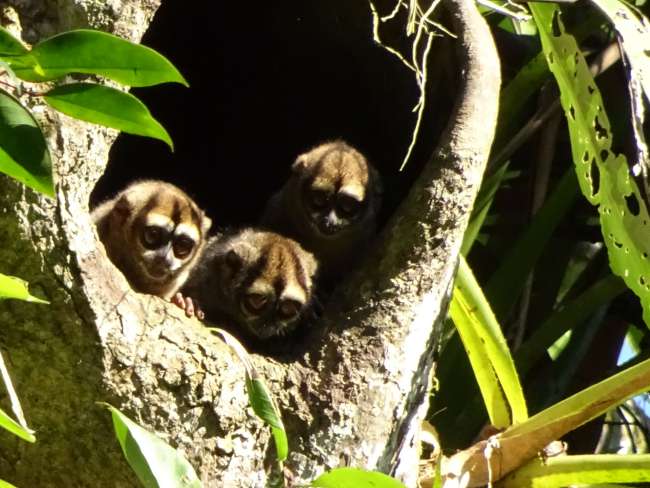
பயண அறிக்கைகள் ஈக்வடார்
